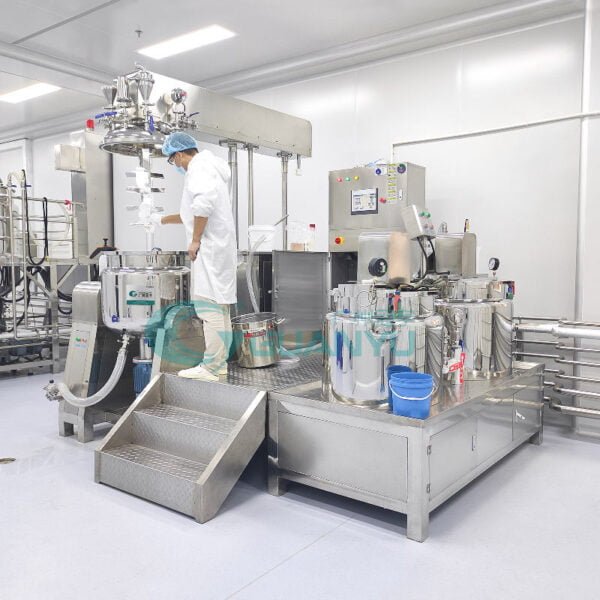Гомогенизатор эмульсия :Эмульгирование и гомогенизация
1. Обзор и ключевое отличие
Научный мир является домом для множества сложных явлений и процессов, которые играют решающую роль в нашей повседневной жизни. Одна такая сфера включает в себя объединение веществ, которые естественным образом сопротивляются смесям. В этой сфере, Вы найдете два критических процесса эмульгирования и гомогенизации. Хотя оба метода разделяют конечную цель сочетания жидкостей, Они отличаются тем, как они достигают места назначения. Понимание и навигация этих различий является первым шагом к оценке трансформационной роли эмульсионной системы гомогенизатора.
2. Наука, стоящая за эмульгированием
Эмульгификация в основном является процессом создания эмульсии - однородная смесь двух несмешивающихся жидкостей. Эмульсия опирается на критически важную поддержку эмульгаторов, такие как мыло и моющие средства, это счастливо пробиться как жидкости, и заставляет их смешать. Проводится в отраслях с использованием специализированных миксеров, Эмульгирование лежит в основе действия эмульгаторов, таких как поверхностно -активные вещества. Эти химические агенты повышают кинетическую стабильность смеси, Предотвращение разделения неохотно смешанных жидкостей. Эмульгификация преследует три основных целях: Обеспечение физико -химической стабильности продукта, определение структуры эмульсии, и создание желательных сенсорных свойств, таких как внешний вид и текстура.

3. Тонкости гомогенизации
В отличие, Гомогенизация концентрируется на построении равномерного раствора из двух взаимно нерастворимых жидкостей. Это достигается путем превращения сложной пары в эмульсию. Первичная и вторичная - два столпа гомогенизации, Первый включающий отдельные жидкости, образующие эмульсию напрямую, Последний является уменьшением размера капель в существующей жидкости. Этот процесс облегчен устройством, известным как гомогенизатор, который использует силу крайнего давления и сил сдвига для разрушения и рассеивания частиц в противоположных жидкостях.

4. Сравнение эмульгирования и гомогенизации
В то время как эмульгирование и гомогенизация касаются смешивания несмешивающихся жидкостей, природа их процессов отличает их. Эмульгирование приводит к эмульсии’ через рассеивание одной несмешивающейся жидкости внутри другой, В то время как гомогенизация завершается гомогенным раствором’ Смешив две смешиваемые жидкости. Таблица ниже резко излагает ключевые различия:
| Эмульгирование | Гомогенизация |
| Создание эмульсии | Создание однородного раствора |
| Поверхностно -активные вещества как эмульгаторы | Гомогенилизаторы как фасилитаторы |
| Обеспечение физико -химической стабильности | Обеспечение равномерного смешивания |
| Определенные структурные характеристики | Широкий диапазон приложений |
| Сенсорные свойства, такие как внешний вид, текстура | То же самое на протяжении всего смеси |
5. Заключительные мысли об эмульгировании и гомогенизации
Подводить итоги, И эмульгификация, и гомогенизация способствуют подготовки жидкостей для ряда применений в разных отраслях промышленности. Однако, Ключевым моментом, который следует отметить, является то, что в то время как эмульгирование идет на подготовку эмульсии, Гомогенизация поднимается на тот же принцип, чтобы набрать гомогенное решение. Несмотря на их отчетливые подходы, Оба метода занимают свое место в мире промышленности, привлечение устойчивых жидкостей в гармоничные браки научной необходимости. Примечательно, Система эмульсии гомогенизатора обладает центром внимания в гомогенизации, Открытие огромных возможностей с мощными способностями смешивания.

